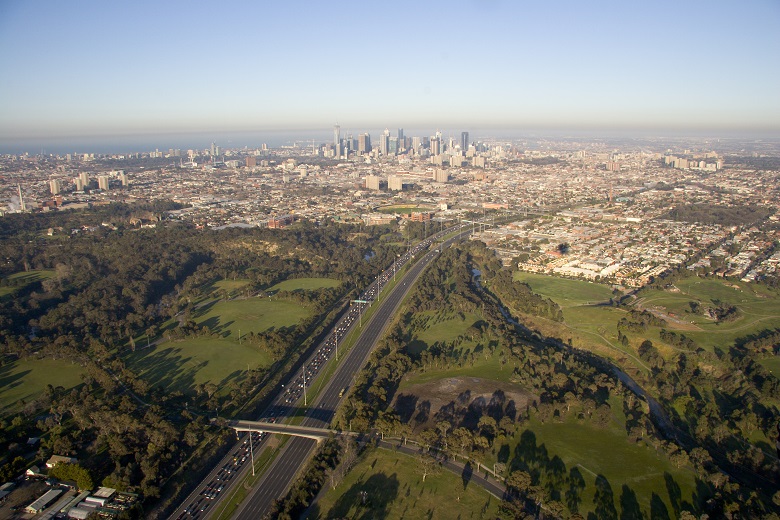
Australia needs to embrace urban density if the nation and its cities are to thrive, and boosting the population to 60 million could turn the country into an economic powerhouse, a population forum has heard.

Minister for Cities, Urban Infrastructure and Population Alan Tudge told a debate organised by development industry organisation Urban Taskforce that the nation is undergoing one of its most rapid periods of population growth.
Australia was facing 1.6 per cent growth per annum – twice the pace of the US and 2.5 times the rate of the OECD average, he said.
Mr Tudge said there was a need to balance the economic benefits of rapid population growth with the challenges, including urban congestion and infrastructure lag.
“Certainly population is one of the great (economic) growth leaders … but the challenge is balancing that out with the liveability of our cities, with the congestion challenges,” he told a luncheon.
“How do you maintain that strong economic growth but at the same time address some of the serious concerns about roads coming to a standstill, about trains being full?”
A central element of the government’s population plan, along with investment in infrastructure, was a “modest reduction” in migrant intake with the emphasis on getting migrants to less populated regional centres, he said.
Benefits of a Big Australia
But Shane Geha, managing director of rezoning company EG Advisory, said compared to other countries Australia has low population density.

With 7.7 million square kilometres of land and a population of 25 million, Australia had just over 3 people per square kilometre, he said.
Sydney had 407 people per square kilometre, Dr Geha said, compared to London with 4,542 per sq/km, Singapore with 7,909 per sq/km and Manhattan with 27, 826 per sq/km.
He said only 48 per cent of the population is currently in the tax bracket and Australia needed more people to boost its economy.
The simplest solution, he says, was to import more migrants in the 20-60 age group.
“Density is the friend of the city,” he said. “With 400 people per square kilometre we could probably get a lot denser without feeling very much at all.”
More than doubling Australia’s population to between 50-60 million would make Australia the most powerful regional economy south of the equator and possibly the fifth most powerful economy in the world, he said.
Megacities the way to go
Future strategist Brian Haratsis, executive chairman of property advisory consultancy MacroPlan, said megacities are the new global economic engines, yet compared to much of the world Australia is small and lacking in innovation and connectivity.
China for example, was an “empire of megacities” with 73 new airports built since the year 2000, Mr Haratsis said.
“We’re sitting here on the edge of the world thinking that things are pretty tough and we’re growing too fast. But from an economic perspective we’re just not thinking about the scale and the opportunity for the future.”
Australia was doomed to remain a “technology taker” unless it grew its skilled workforce, he said.
“When will we begin to understand that without the right critical mass and technical skill sets we will continue to be technology takers?
“What we need is more skilled people in Australian and more locally skilled people.”
Establishing gateway cities, with a connected Melbourne, Sydney and possibly Brisbane was the only way to move forward quickly, Mr Haratsis said.
“We need more flexibility, less regulation and we need to make it easier to get in and out of Australia”.
Labour market pressures
University of Melbourne population expert Professor Peter MacDonald said now was not the time to be cutting immigration. Fear of congestion was a “spurious argument”, he said.
Rather, crowding and congestion were inevitable results of urban living, but history had shown how quickly population trends could shift.
He said with 2 million baby boomers set to age out of Australia’s workforce in coming years, labour force issues constituted the main rationale for more immigration.
Recent research had shown that between 2016-2014 there will be something like 4.2 million new job openings in Australia as a result of retiring baby boomers and lower birthrates during the 1990s, Professor Macdonald said.
“We cannot get the labour force that we need from local sources,” he said.
Population plan
Mr Tudge said one of the problems with the current population growth was that it was unevenly distribruted with 75 per cent occurring in Melbourne, Sydney and South East Queensland.
That’s why the government’s population plan included a reduction in migrant intake from 190,000 to 160,000 – with 23,000 of those targetting regional areas – and a massive investment in infrastructure including fast rail to link large urban centres to satellite cities.
The government also wanted to foster better planning between all levels of government with a “bottom up approach” to migration and more city deals.
Comment below to have your say on this story.
If you have a news story or tip-off, get in touch at editorial@governmentnews.com.au.
Sign up to the Government News newsletter.
6 thoughts on “Megacities the new ‘global economic engines’”
Leave a comment:
Most read
Scathing report finds little has changed at PwC
Qld council welcomes progress on massive battery system
Inquiry to consider how federal govt can address councils’ sustainability issues
‘Local’ procurement turns out not to be so local, committee hears
Another report finds local government falling down on cyber security
Megacities is so 20th Century! With the (eventual) deployment of fast broadband across the country Australia is ideally placed to adopt a 21st Century decentralisation strategy…
Good idea – To make Australia becomes developing country! Already started
Why megacities? Large cities won’t solve our economic issues. Seems to conservatives ( most of the population) UN Agenda30 is pulling your strings. Stop beating about the bush, your pushing the Kalergi plan (mass immigration). Along with other deceptive measures to push socialist AI smart cities, whilst removing people and farmers from the land under a land reappropriation UN banner. We don’t want this or will ever except it.
No! A sustainable Australia will be Better, not bigger.
EGS was busy delivering this ‘mega city’ to Ryde LGA a decade ago. Properties on the southern side of Epping Road were bought up at low prices from innocent owners, then consolidated, and multi-storey residential development approved by NSW Government. Note: not the local council. Massive windfall profits for the developer, but not to the original owners.
I agree that smarter cities are the future not bigger cities. Adopting new technologies to adapt our living is critical. Very fast trains connecting east coast cities, more regional development increasing quality rather than quantity of life to name but two initiatives.
But before we build population we need to think about our food and water supply to support a big population. Critical supply issues highlighted by the current drought highlights that narrow thinking is dangerous. Science to be applied to determine what number is sustainable but more importantly how. What do we build to future proof our wonderful country in the process?
This all requires long term big picture strategy that politicians today lack the foresight to deliver! And the courage to borrow money for at today’s rates, not the rates of ten years in the future.